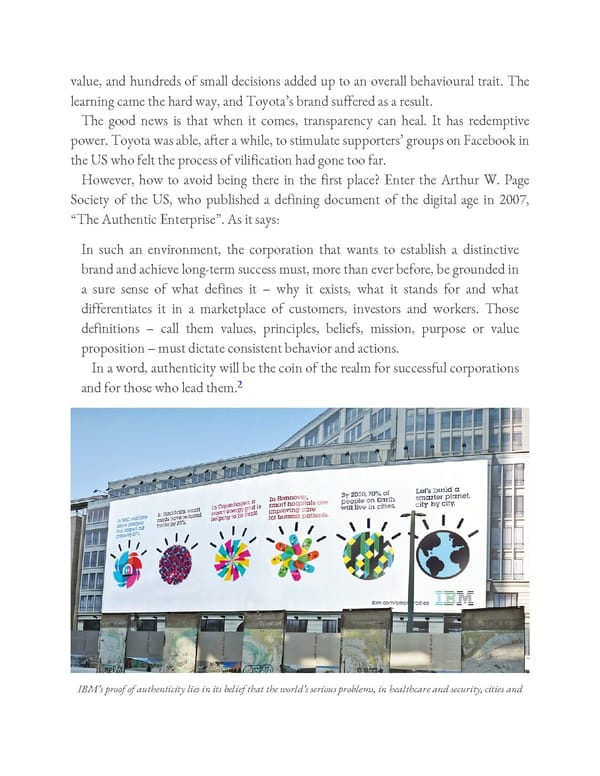value, and hundreds of small decisions added up to an overall behavioural trait. The learning came the hard way, and Toyota’s brand suffered as a result. The good news is that when it comes, transparency can heal. It has redemptive power. Toyota was able, after a while, to stimulate supporters’ groups on Facebook in the US who felt the process of vilification had gone too far. However, how to avoid being there in the first place? Enter the Arthur W. Page Society of the US, who published a defining document of the digital age in 2007, “The Authentic Enterprise”. As it says: In such an environment, the corporation that wants to establish a distinctive brand and achieve long-term success must, more than ever before, be grounded in a sure sense of what defines it – why it exists, what it stands for and what differentiates it in a marketplace of customers, investors and workers. Those definitions – call them values, principles, beliefs, mission, purpose or value proposition – must dictate consistent behavior and actions. In a word, authenticity will be the coin of the realm for successful corporations 2 and for those who lead them. IBM’s proof of authenticity lies in its belief that the world’s serious problems, in healthcare and security, cities and
 Ogilvy on Advertising in the Digital Age Page 107 Page 109
Ogilvy on Advertising in the Digital Age Page 107 Page 109